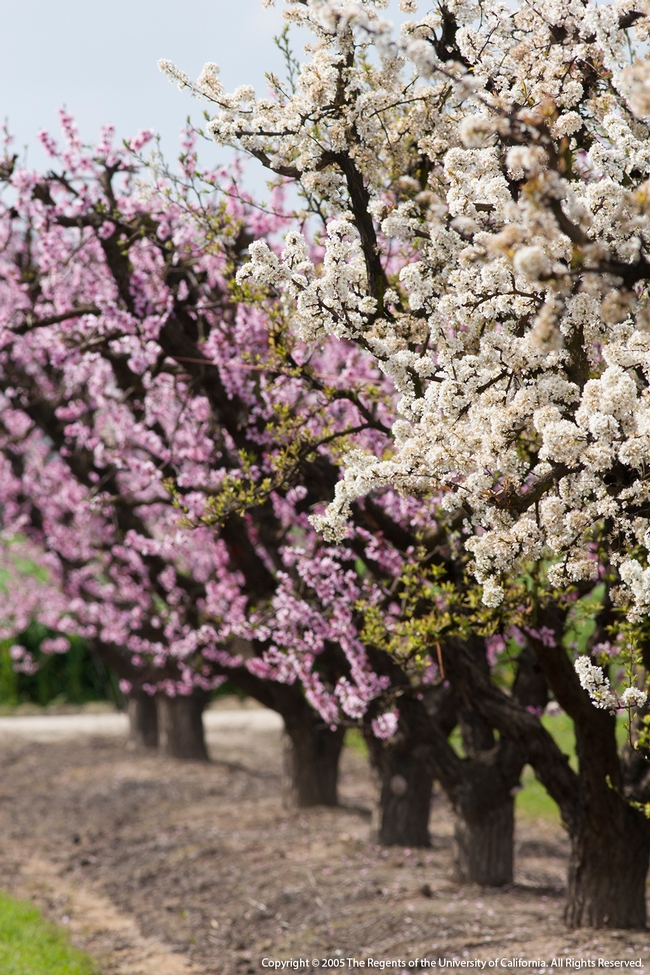Stone Fruit Trees
By Andrea Peck UCCE Master Gardener
Money may not grow on trees, but stone fruit certainly does. The luscious fruit of summer, so sweet and drippy, lends credence to the notion that health food can be tasty. Stone fruit (genus Prunus) include the favorable bunch of fruits and one nut that grow on trees: apricot, sweet and sour cherry, nectarine, peach, European plum and prune, Japanese plum and almond. The oddball of this group, the almond tree, is included in the roundup based on its botanical qualities. Named because of the mouthful of a hard pit that accompanies the heady fruit, stone fruit is commonly grown throughout most of California. Growing your own tree may seem too dreamy to be true, particularly if you live in a compact Central California-style abode. But don't despair; they do come in temptingly small varieties.
Selection of your fruit tree is important. Stone fruit trees require a certain number of winter “chill” hours, or hours below 45°F, in order to fruit properly in the summer months. Be sure to purchase a tree with a chill requirement that is appropriate for your area. Trees range in size from dwarf and semi-dwarf to standard-sized. Dwarf trees grow up to 12 feet, semi-dwarf reach 20 feet, and standard trees may top 35 feet. Placement matters. Look for a sunny, spacious and low-wind location that is accessible for pruning, watering and harvesting.
Adequate irrigation and fertilization are critical in maintaining a healthy tree and producing a bountiful harvest. Fertilization requirements differ by tree and soil quality upon planting. Most trees require less fertilization during the first year and more as they mature. It is beneficial to keep a fertilization schedule that is appropriate for the needs of your tree. Pruning, perhaps the thorniest element of caring for your tree, should not be ignored. Learn how to prune correctly or have someone do it for you.
I'd round this off with a few suggestions on how to handle your harvest, but I'm guessing you may have some ideas of your own. For in-depth information on trees, fertilization, pruning and harvesting visit this link: http://homeorchard.ucanr.edu/.
